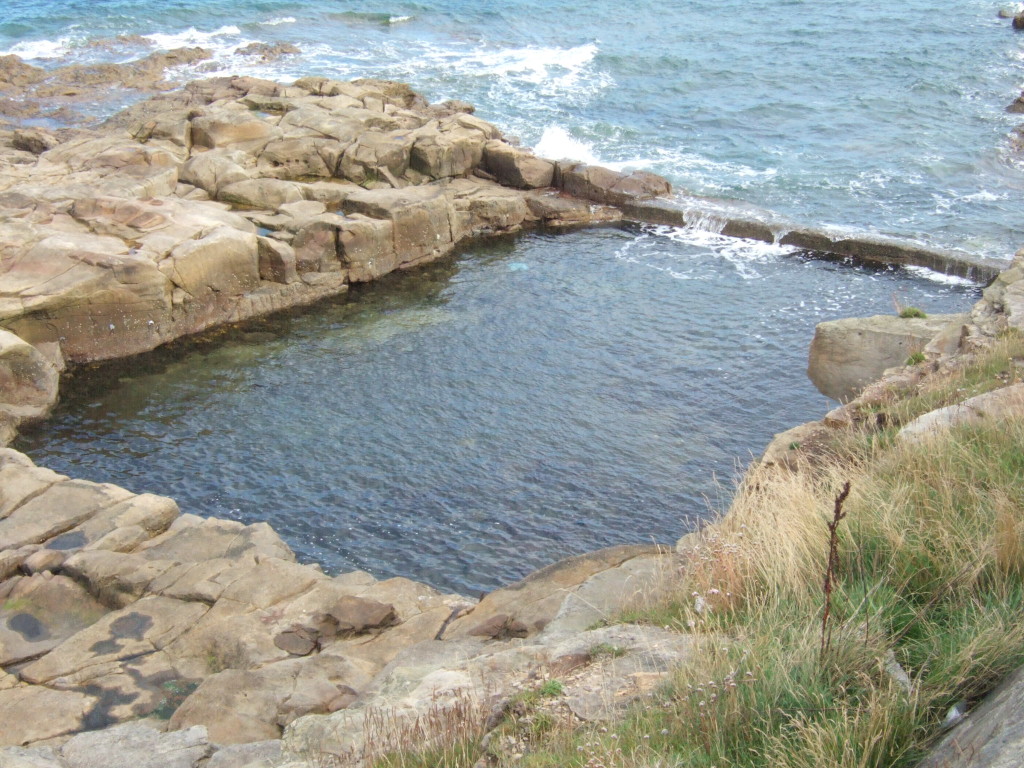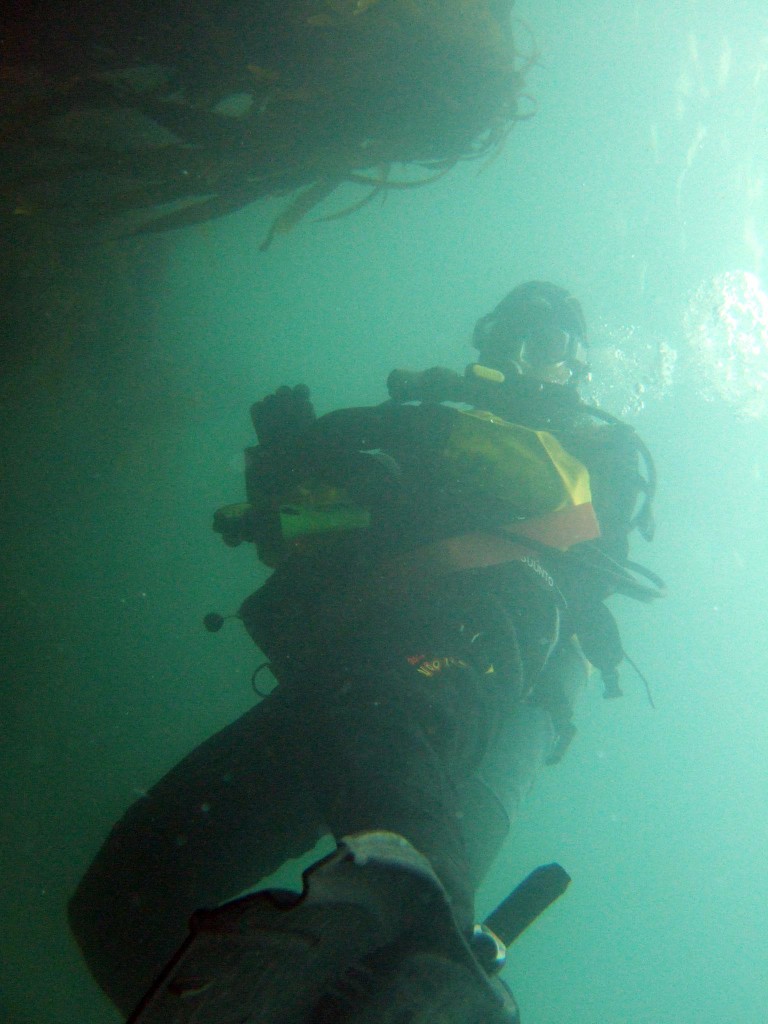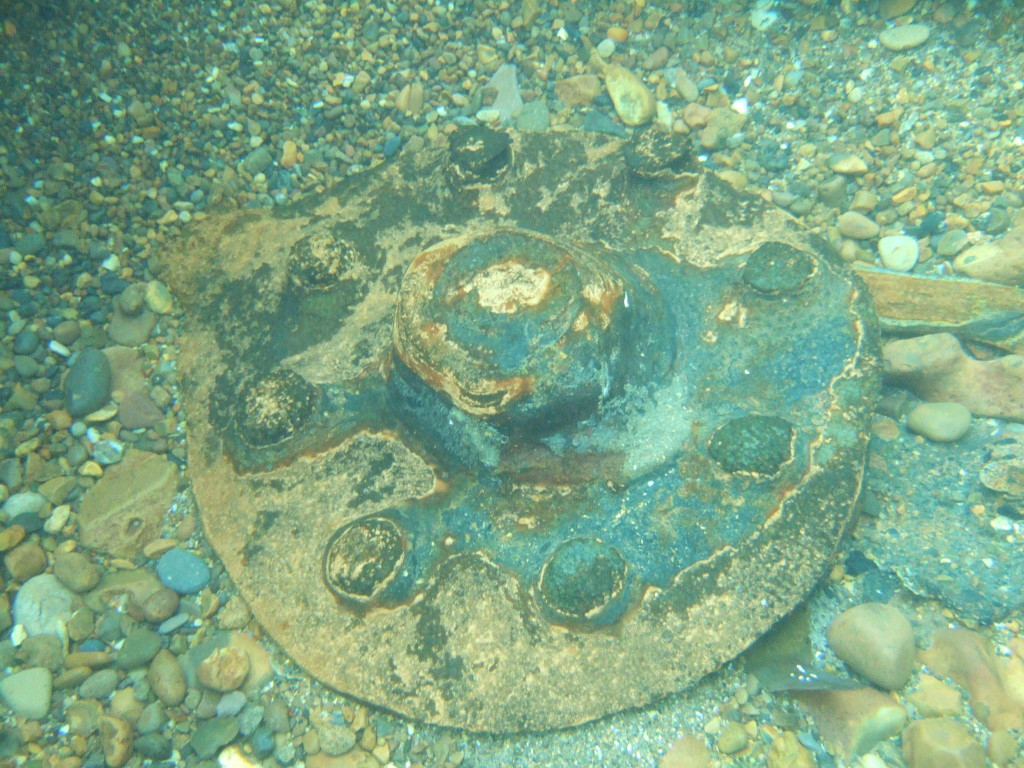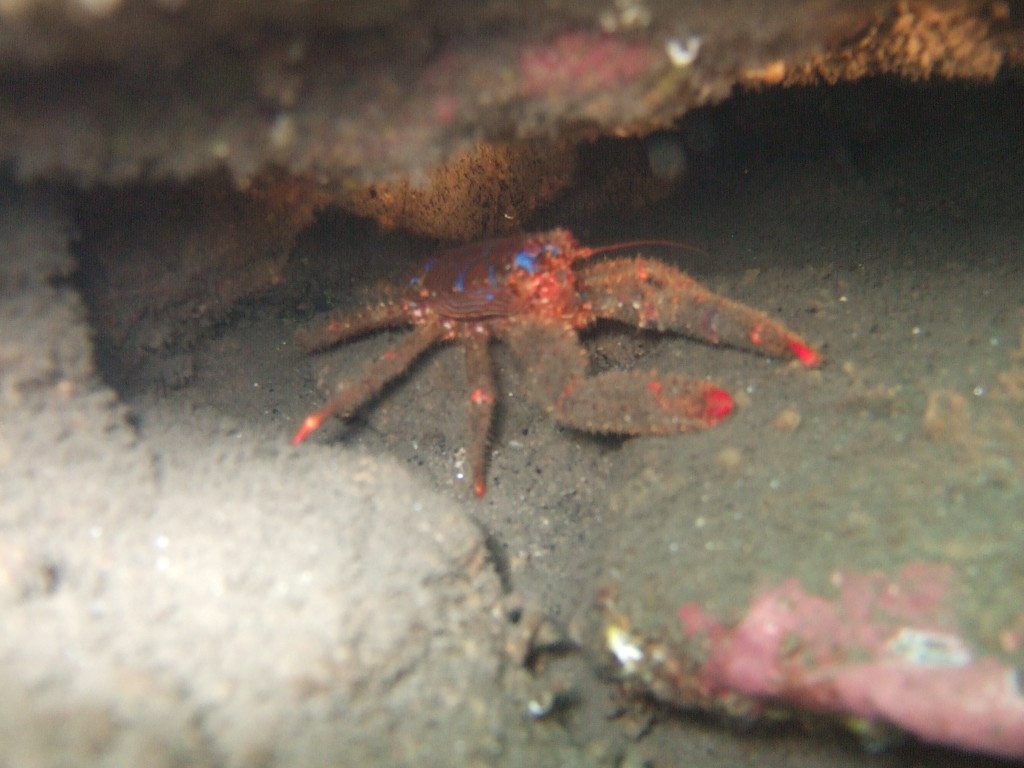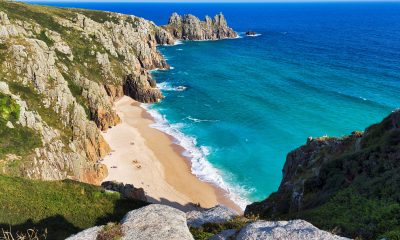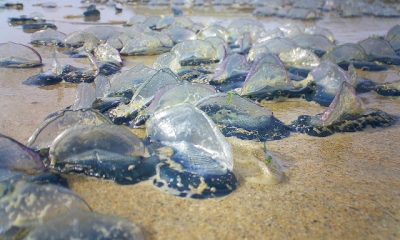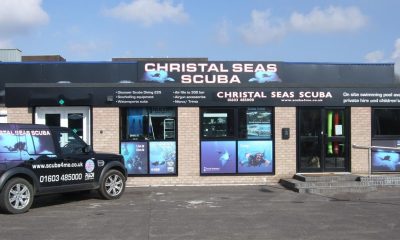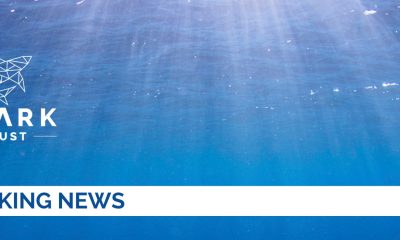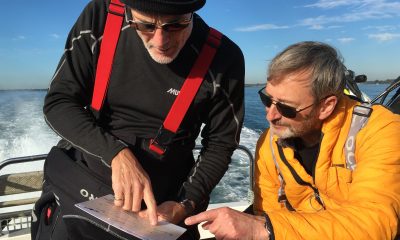Travel Stories
Diving Browns Bay

Shallow crystal clear waters, a scenic wreck site and more marine life than I have had the pleasure to dive with… all in just 8 metres of water. It’s easy to see why Browns Bay is a very popular dive destination in the UK.
Browns Bay on the east coast of Northumberland has always been a popular holiday and seaside location. So much so that on the 23rd of August 1855 the Duke of Northumberland employed a swimming coach to teach the locals how to swim. And then nearly forty years later planning permission was given at a cost of £180.00 to blast a hole in the rocks that would create Whitley Bay’s very first open air pool. Dynamite was used create a 70 foot long and 30 foot wide swimming pool. It’s approximately five feet deep at one end and 3 feet deep at the other. With a continuous supply of fresh seawater at high tide the pool would need little maintenance. Locals and holiday makers would put on their very fetching full length swim suits (which were as thick as a semi dry in the good old days) and jump in for a dip in the cool northeast water. Although popular when it was first built with swimming clubs, holiday makers and fitness fanatics using it whenever the weather permitted, the pool has for sometime now only really been used by scuba diving instructors when they introduce student divers on the open water section of the course, so that they can adjust to the cooler sea temperatures.
When you get to the dive site and look at the landscape that you have to clamber across with your kit on just getting to the waters edge, you will probably think that I have written this article with people that are built like Arnold Schwarzenegger in mind. But believe me, this little dive is well worth the short trek down the stone steps and across the rocks. The good news is that there is free parking along the road opposite the beach. The bad news, with no facilities here, changing into or out of your dive kit can pose a problem. The local council has found it necessary to put up signs asking divers to be careful when undressing as groups of little old ladies have been seen lurking ready to pounce on unsuspecting near naked divers.
On this particular dive make sure you have surface support, not just for safety reasons but they will be able to help you with your kit and look after the car keys. The usual SMB, Torch and dive knife will be required here. Send up the SMB when you get to the 8 metre section of the dive as boats and Jet Ski’s use the area.
Once kitted up follow the stone steps down to the rocks and carefully make your way to the Victorian swimming pool; it’s a little up and down and can be slippery so take your time. I set my kit down just to the left of the pool and made any last minute adjustments; and then after buddy checks were complete; into the water we went. The maximum depth at this point is no more than 4 metres. My dive guide Michelle Cooper took me towards the small kelp forest which was about 15 metres away from the entry point. Rather than going through it or round it I decided to go over the kelp which rose to about a metre from the surface. Take your time here and as you look down into the kelp you may find the odd pipefish and Nudibranch hiding under the leaves. Moving on, the depth gradually slopes down to around 8 metres. And from here on, it was crustacean city. Squat lobsters, common lobsters, edible crabs and Velvet swimming crabs were here in abundance. Everywhere I looked these big lobbies were looking back at me. And as I got closer to them they arched their back, flexed their muscles and opened their claws ready to defend themselves. In the crevices of the rocks I found squaties hiding along with velvet swimming crabs, and huge edible crabs the size of dinner plates. The visibility here was around 10 metres.
We made our way to an old wreck called the Butetown. This little steamship was loaded with coal when she was grounded at Browns Bay in December 1917. Although she is nearly 100 years old and well broken up, you can still see the outline of this once proud ocean going vessel. There are five specialties that I think may benefit you on this dive; Wreck, Drysuit, Peak Performance Buoyancy, Underwater photography; and this is an ideal site for the National Geographic specialty because you can research the wreck as part of your project. The amount of marine life here will surprise even the most experienced UK diver. Lumpsuckers can be found nesting around the wreck between February and May, with the males remaining with the eggs for up to two months until they hatch.
During the summer months Cuttlefish come in close to shore to attach their eggs to the Kelp and seaweed. Every now and then spend a few seconds looking out into the blue; you should catch sight of the many shoals of fish gracefully swimming past. Bib, Pollack and wrasse can be found here; and as this is an area that is popular with anglers care should be taken so as to not become entangled with their lines. The coral encrusted boilers are home to a number of small creatures and its worth taking a torch to look inside as large conger have also been spotted here. My dive guide Michelle and I spent sometime investigating the entire wreck from different angles; from the bow to the boilers we looked under plates and lifted and replaced anything that could be moved. Keep an eye out for flatfish that have camouflaged themselves with sand; and resting dogfish that are lying on the ocean floor against the gentle current. The seabed is also home to a multitude of brightly coloured plants, such as Corallina that densely populates the area and which is then in turn home and protection for smaller creatures such as pipefish, hermit crabs and shrimps. Petalonia can be found growing amongst the ribs of the wreck adding a touch of green to the already colourful scenery, and Dalyell Anemones and sponges decorate the sides of rocks which with the exceptionally good visibility gives an almost tropical feel to the dive. After an hour under the water it was time to end our dive exploring this beautiful site. And although we had gone this way and that, Michelle new exactly where we were, and within no time at all we were back where we started. Now be careful as you exit the water as it will be quite slippery; and be prepared for a slightly longer walk back to the car as it’s an uphill hike with all of your kit on.
Patrick went diving at Browns Bay with Aquanorth Diving Centre. To book a dive at Browns Bay contact the staff at Aquanorth by calling them on +44 (0)191 266 6626 or email them at enquiries@aquanorth.co.uk. You can also visit the Aquanorth website for more information: www.aquanorth.co.uk
Blogs
Northern Red Sea Reefs and Wrecks Trip Report, Part 3: The Mighty Thistlegorm

Jake Davies boards Ghazala Explorer for an unforgettable Red Sea diving experience…
Overnight, the wind picked up, making the planned morning dive a bit bumpy on the Zodiacs to the drop point on Thomas Reef. There, we would dive along the reef before descending through the canyon and then passing under the arch before ascending the wall with a gentle drift. The site provided great encounters with more pelagic species, including shoals of large barracuda, tuna, and bigeye trevally.
Once back on the boat, it was time to get everything tied down again as we would head back south. This time, with the wind behind us, heading to Ras Mohammed to dive Jackfish Alley for another great gentle drift wall dive before then heading up the coast towards the Gulf of Suez to moor up at the wreck of the Thistlegorm. This being the highlight wreck dive of the trip and for many onboard, including myself, it was the first time diving this iconic wreck. I had heard so much about the wreck from friends, and globally, this is a must on any diver’s list. Fortunately for us, there was only one other boat at the site, which was a rarity. A great briefing was delivered by Ahmed, who provided a detailed background about the wreck’s history along with all the required safety information as the currents and visibility at the site can be variable.

Kitting up, there was a lot of excitement on deck before entering the water and heading down the shoreline. Descending to the wreck, there was a light northerly current which reduced the visibility, making it feel more like the conditions that can be found off the Welsh coast. At 10m from the bottom, the outline of the wreck appeared as we reached the area of the wreck which had been bombed, as our mooring line was attached to part of the propeller shaft. Arriving on deck, instantly everywhere you looked there were many of the supplies which the ship was carrying, including Bren Carrier tanks and projectiles that instantly stood out.

We headed around the exterior, taking a look at the large propeller and guns mounted on deck before entering the wreck on the port side to take a look in the holds. It was incredible to see all the trucks, Norton 16H, and BSA motorcycles still perfectly stacked within, providing a real snapshot in time.

Overall, we had four dives on the Thistlegorm, where for all of the dives we were the only group in the water, and at times, there were just three of us on the whole wreck, which made it even more special, especially knowing that most days the wreck has hundreds of divers. Along with the history of the wreck, there was plenty of marine life on the wreck and around, from big green turtles to batfish, along with shoals of mackerel being hunted by trevally. Some unforgettable dives.

The final leg of the trip saw us cross back over the Suez Canal to the Gobal Islands where we planned to stay the night and do three dives at the Dolphin House for the potential of sharing the dive with dolphins. The site, which included a channel that was teeming with reef fish, especially large numbers of goatfish that swam in large shoals along the edge of the reef. These were nice relaxing dives to end the week. Unfortunately, the dolphins didn’t show up, which was okay as like all marine life they are difficult to predict and you can’t guarantee what’s going to be seen. With the last dive complete, we headed back to port for the final night where it was time to clean all the kit and pack before the departure flight the next day.

The whole week from start to finish on Ghazala Explorer was amazing; the boat had all the facilities you need for a comfortable week aboard. The crew were always there to help throughout the day and the chefs providing top quality food which was required after every dive. The itinerary providing some of the best diving with a nice mixture of wreck and reef dives. I would recommend the trip to anyone, whether it’s your first Red Sea liveaboard in the Red Sea or you’re revisiting. Hopefully, it’s not too long before I head back to explore more of the Red Sea onboard Ghazala Explorer.

To find out more about the Northern Red Sea reef and wrecks itineraries aboard Ghazala Explorer, or to book, contact Scuba Travel now:
Email: dive@scubatravel.com
Tel: +44 (0)1483 411590
Photos: Jake Davies / Avalon.Red
Blogs
Northern Red Sea Reefs and Wrecks Trip Report, Part 2: Wall to Wall Wrecks

Jake Davies boards Ghazala Explorer for an unforgettable Red Sea diving experience…
The second day’s diving was a day full of wreck diving at Abu Nuhas, which included the Chrisoula K, Carnatic, and Ghiannis D. The first dive of the day was onto the Chrisoula K, also known as the wreck of tiles. The 98m vessel remains largely intact where she was loaded with tiles which can be seen throughout the hold. The stern sits at 26m and the bow just below the surface. One of the highlights of the wreck is heading inside and seeing the workroom where the machinery used for cutting the tiles are perfectly intact. The bow provided some relaxing scenery as the bright sunlight highlighted the colours of the soft coral reef and the many reef fish.

Following breakfast, we then headed to the next wreck, which was the Carnatic. The Carnatic is an 89.9m sail steamer vessel that was built in Britain back in 1862. She ran aground on the reef back in 1869 and remains at 27m. At the time, she was carrying a range of items, including 40,000 sterling in gold. An impressive wreck where much of the superstructure remains, and the two large masts lay on the seafloor. The wooden ribs of the hull provide structures for lots of soft corals, and into the stern section, the light beams through, bouncing off the large shoals of glass fish that can be found using the structure as shelter from the larger predators that are found outside of the wreck.

The final wreck at Abu Nuhas was the Ghiannis D, originally called ‘Shoyo Maru,’ which was 99.5m long and built in Japan back in 1969 before becoming a Greek-registered cargo ship in 1980. The ship then ran aground on the reef on April 19th, 1983, and now sits at the bottom at a depth of 27m. Heading down the line, the stern of the ship remains in good condition compared to the rest of the hull. The highlight of the wreck, though, is heading into the stern section and down the flights of stairs to enter the engine room, which remains in good condition and is definitely worth exploring. After exploring the interior section of the ship, we then headed over to see the rest of the superstructure, where it’s particularly interesting to see the large table corals that have grown at the bow relatively quickly considering the date the ship sank. After surfacing and enjoying some afternoon snacks, we made sure everything was strapped down and secured as we would be heading north and crossing the Gulf of Suez, where the winds were still creating plenty of chop.

The next morning, it was a short hop to Ras Mohammed Nature Reserve for the next couple of days of diving. The 6am wake-up call came along with the briefing for the first site we would be diving, which was Shark & Yolanda. The low current conditions allowed us to start the dive at Anemone City, where we would drift along the steep, coral-filled wall. These dives involved drifts, as mooring in Ras Mohammed wasn’t allowed to protect the reefs. As a dive site, Shark & Yolanda is well-known and historically had a lot of sharks, but unfortunately not so many in recent years, especially not so early in the season. However, there was always a chance when looking out into the blue.

The gentle drift took us along the steep walls of the site, with plenty of anemone fish to be seen and a huge variety of corals. It wasn’t long into the dive before we were accompanied by a hawksbill turtle, who drifted with us between the two atolls before parting ways. Between the two reefs, the shallow patch with parts of coral heads surrounded by sand provided the chance to see a few blue-spotted stingrays that were mainly resting underneath the corals and are always a pleasure to see. With this being the morning dive, the early sunlight lit up the walls, providing tranquil moments. Looking out into the blue, there was very little to be seen, but a small shoal of batfish shimmering underneath the sunlight was a moment to capture as we watched them swim by as they watched us.

Towards the end of the dive, we stopped at the wreck of the Jolanda where the seafloor was scattered with toilets from the containers it was carrying. This provided a unique site to make a safety stop, which was also accompanied by a large barracuda slowly swimming by, along with a hawksbill turtle calmly swimming over the reef as the sun rays danced in the distance.
For the next dive, we headed north to the Strait of Tiran to explore the reefs situated between Tiran Island and Sharm El Sheik, which were named after the British divers who had found them. We started on Jackson before heading to Gordons Reef, where we also did the night dive. All the atolls at these sites provided stunning, bustling coral reefs close to the surface and steep walls to swim along, which always provided the opportunity to keep an eye out for some of the larger species that can be seen in the blue. Midwater around Jackson Reef was filled with red-toothed triggerfish and shoals of banner fish, which at times were so dense that you couldn’t see into the blue. Moments went by peacefully as we enjoyed the slow drift above the reef, watching these shoals swim around under the mid-afternoon sun.

The night dive at Gordon’s Reef was mainly among the stacks of corals surrounded by sand, which was great to explore under the darkness. After some time circling the corals, we came across what we were really hoping to find, and that was an octopus hunting on the reef. We spent the majority of the dive just watching it crawl among the reef, blending into its changing surroundings through changes in colour and skin texture. It’s always so fascinating and captivating to watch these incredibly intelligent animals, in awe of their ability to carry out these physical changes to perfectly blend into the reef. Before we knew it, it was time to head back to the boat to enjoy a well-deserved tasty dinner prepared by the talented chefs onboard.
Check in for the 3rd and final part of this series from Jake tomorrow!
To find out more about the Northern Red Sea reef and wrecks itineraries aboard Ghazala Explorer, or to book, contact Scuba Travel now:
Email: dive@scubatravel.com
Tel: +44 (0)1483 411590
Photos: Jake Davies / Avalon.Red
-

 News3 months ago
News3 months agoCapturing Critters in Lembeh Underwater Photography Workshop 2024: Event Roundup
-

 Marine Life & Conservation Blogs3 months ago
Marine Life & Conservation Blogs3 months agoCreature Feature: Swell Sharks
-

 Blogs2 months ago
Blogs2 months agoMurex Resorts: Passport to Paradise!
-

 Blogs2 months ago
Blogs2 months agoDiver Discovering Whale Skeletons Beneath Ice Judged World’s Best Underwater Photograph
-

 Gear Reviews3 weeks ago
Gear Reviews3 weeks agoGEAR REVIEW – Revolutionising Diving Comfort: The Sharkskin T2 Chillproof Suit
-

 Gear Reviews3 months ago
Gear Reviews3 months agoGear Review: Oceanic+ Dive Housing for iPhone
-

 News2 months ago
News2 months agoPADI Teams Up with Wellness Brand Neuro to Drive Ocean Change and Create a Blue State of Mind
-

 Marine Life & Conservation2 months ago
Marine Life & Conservation2 months agoSave the Manatee Club launches brand new webcams at Silver Springs State Park, Florida




